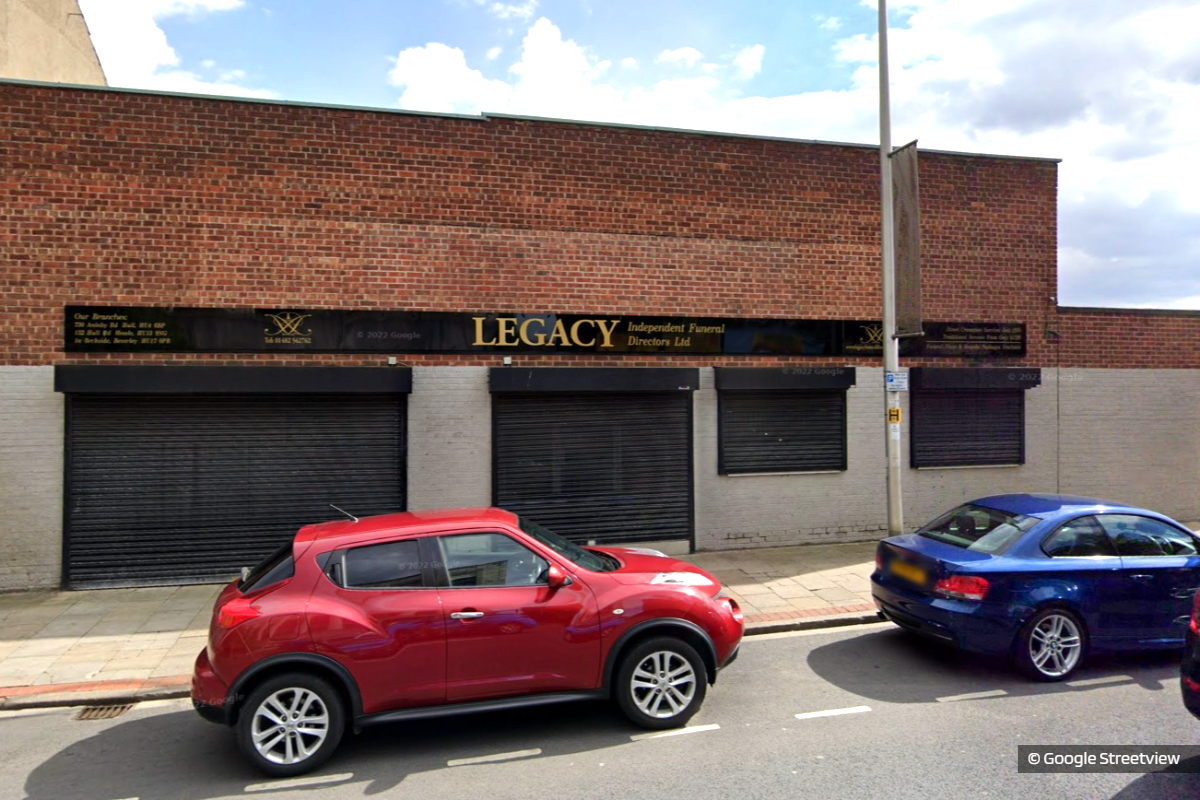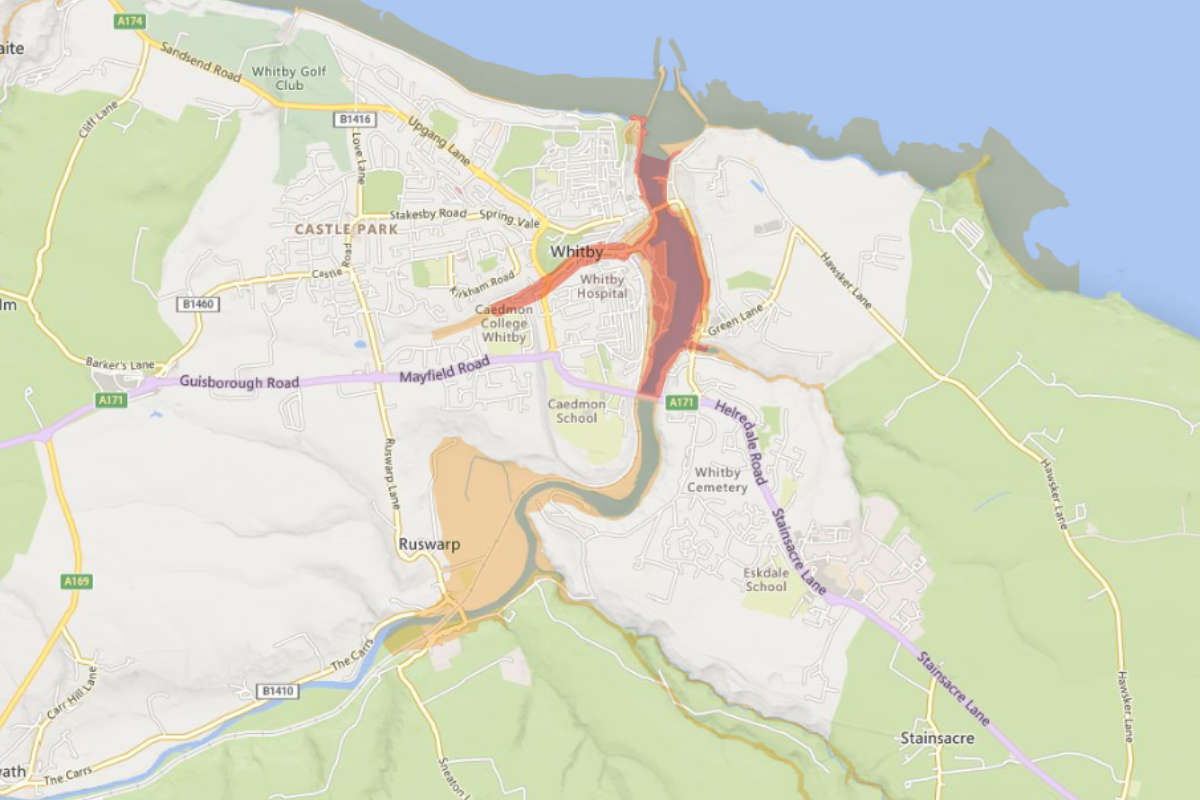
Research from Shelter shows the Scarborough Borough to have the highest rate of homeless people across Yorkshire.
New research from Shelter shows more than 5,000 people are recorded as homeless in Yorkshire and the Humber, including more than 2,000 children.
Shelter’s detailed analysis of official homelessness figures and responses to a Freedom of Information request shows that of the over 5,000 people in Yorkshire and the Humber without a home, 170 people are sleeping rough on any given night and 4,540 are living in temporary accommodation – many of whom are families.
Shelter's data shows that 1 in 409 people in the Scarborough Borough are homeless, the highest rate for any area in Yorkshire.
| Regional rank | Local authority | [1] Est. no. of people homeless and living in TA arranged by the council | [2] Est. no. of people homeless and living in TA arranged by them or homeless at home | [3] No. of people sleeping on the streets on a given night | [6] No. of homeless children in TA | [7] Est. total no. homeless people | [8] Rate of homelessness (1 in X people) |
|---|---|---|---|---|---|---|---|
| 1 | Scarborough | 123 | 128 | 15 | 34 | 266 | 409 |
| 2 | Wakefield | 650 | 2 | 5 | 264 | 657 | 538 |
| 3 | Kirklees | 726 | 0 | 5 | 418 | 731 | 593 |
| 4 | Kingston upon Hull, City of | 293 | 93 | 11 | 155 | 397 | 672 |
| 5 | Doncaster | 418 | 15 | 20 | 209 | 453 | 680 |
| 6 | North East Lincolnshire | 202 | 0 | 10 | 55 | 212 | 740 |
| 7 | Sheffield | 669 | 2 | 18 | 233 | 689 | 807 |
| 8 | Harrogate | 141 | 0 | 0 | 66 | 141 | 1154 |
| 9 | East Riding of Yorkshire | 282 | 2 | 7 | 132 | 291 | 1175 |
| 10 | Calderdale | 175 | 0 | 0 | 85 | 175 | 1181 |
Across England the number of people living in temporary accommodation has risen by an alarming 74% in the last 10 years – something the charity argues is driven by the chronic shortage of social homes, and an over-reliance on grossly expensive and unstable private renting.
Shelter says that more than two-thirds of families (68%) living in temporary accommodation in England have been there for over a year, showing this type of accommodation is becoming less and less “temporary” as families cannot escape homelessness due to the severe lack of affordable homes. The charity says it is a situation made even worse by the three-year freeze on housing benefit, and cost of living crisis.
As well as calculating the total number of homeless people, Shelter says it has undertaken the largest ever survey of homeless households living in temporary accommodation. The research found that living in temporary accommodation has a hugely detrimental impact on people’s health. It revealed that across England:
- Almost two-thirds of people (63%) say that living in temporary accommodation has had a negative impact on their mental health.
- Half (51%) say that it has had a negative impact on their physical health.
- Two in five people (39%) say that living in temporary accommodation has made it harder to access healthcare appointments.
Shelter is issuing an urgent appeal for public support as it braces for a sharp rise in homelessness in 2023. An average of 1000 calls per day from people across England are made to the charity’s emergency helpline. Across England eight in ten (78%) callers are homeless or at risk of becoming homeless – a figure which has increased by 8% since last year.
Polly Neate, chief executive of Shelter, said:
“The new year should be a time of hope, but this isn’t the case for the over 5,000 homeless people in Yorkshire and the Humber who are facing a truly bleak 2023. A cold doorway or a grotty hostel room is not a home, but this is reality for too many people today.
“Our frontline advisers are working tirelessly to help people who are desperate to escape homelessness - from the parents doing all they can to provide some shred of a normal family life while stuck in an emergency B&B, to the person terrified of another night sleeping rough.
“With private rents and living costs continuing to soar, thousands of people are not just facing a winter of worry, they are at risk of losing the roof over their head. At Shelter, we are bracing ourselves for a sharp rise in homelessness in 2023. More than ever, we will be relying on the public’s generosity to help us support and campaign for all those fighting for a safe home.”
Shelter's Notes and references for tables
-
[1] This is an estimate of the number of people (adults plus children) who live in households which have been found to be homeless and are living in local authority arranged temporary accommodation under homelessness legislation. It is calculated using the detailed household type information in table TA2 of the Temporary Accommodation tables, from DLUHC’s official statutory homelessness statistics. ‘Other’ household types are assumed to contain an average of two people. Q2 2022 data is used wherever possible, if it is not available, the most recent available quarter in 2021/22 is used. If no data was published in the whole year, the area is excluded. To calculate change over the last ten years at a national level we compared with data from 2012 Q2. DLUHC, Statutory homelessness live tables, Detailed local authority level tables, Table TA1 and TA2
-
[2] This is an estimate of the number of people (adults plus children) who live in households who have been found to be homeless and are living in temporary accommodation arranged by themselves or ‘homeless at home’, meaning that they are legally homeless because it is not reasonable for them to continue to occupy their home but they have not yet been accommodated by the local authority. The number of people in these households is assumed to match the average seen in the households above and the same conventions on dates are followed as above. DLUHC, Statutory homelessness live tables, Detailed local authority level tables, Table TA1
-
[3] This is taken from the annual count of rough sleepers on a single night, as at Autumn 2021 (most recent available). These figures are widely considered to be an underestimate of the true scale of street homelessness. DLUHC, Rough sleeping snapshot in England: autumn 2021, Table 1
-
[6] This is the number of children who are homeless and living in temporary accommodation. DLUHC, Statutory homelessness live tables, Detailed local authority level table, Table TA1
-
[7] This is the estimated total number of people who are homeless on a given night. At regional and local level, it sums the first three elements [1-3].
-
[8] This is the rate of people who are homeless in the respected area, calculated by comparing the estimated number of people who are homeless to the total population of the area, using the latest available ONS population statistics. ONS, Population and household estimates, England and Wales: Census 2021, P01




 Man Charged in Legacy Independent Funeral Directors Investigation
Man Charged in Legacy Independent Funeral Directors Investigation
 Mayor Says Half Hourly Trains to Scarborough ‘Moving in the Right Direction’
Mayor Says Half Hourly Trains to Scarborough ‘Moving in the Right Direction’
 Park and Ride Services in Scarborough and Whitby Set to Reopen This Weekend
Park and Ride Services in Scarborough and Whitby Set to Reopen This Weekend
 Efforts Underway to Tackle High Missed Appointment Rates at Scarborough Hospital
Efforts Underway to Tackle High Missed Appointment Rates at Scarborough Hospital
 MP Welcomes Investments in Scarborough and Whitby
MP Welcomes Investments in Scarborough and Whitby
 Scarborough to Benefit from New Flood Defence Investments
Scarborough to Benefit from New Flood Defence Investments
 Esk Valley Residents Attend Westminster Summit on Smart Meter Issues
Esk Valley Residents Attend Westminster Summit on Smart Meter Issues
 Mayor Outlines Vision for the Future of Buses in North Yorkshire
Mayor Outlines Vision for the Future of Buses in North Yorkshire
 Support for Whitby Restaurant Plan in Former Bank Building
Support for Whitby Restaurant Plan in Former Bank Building
 "Act Now" FLOOD WARNINGS Issued For Whitby, Bridlington & Hornsea
"Act Now" FLOOD WARNINGS Issued For Whitby, Bridlington & Hornsea
 Scarborough Transport Charity Needs Help
Scarborough Transport Charity Needs Help
 Yorkshire Coast Holiday Park Benefits from Multimillion Pound Investment
Yorkshire Coast Holiday Park Benefits from Multimillion Pound Investment








Comments
Add a comment